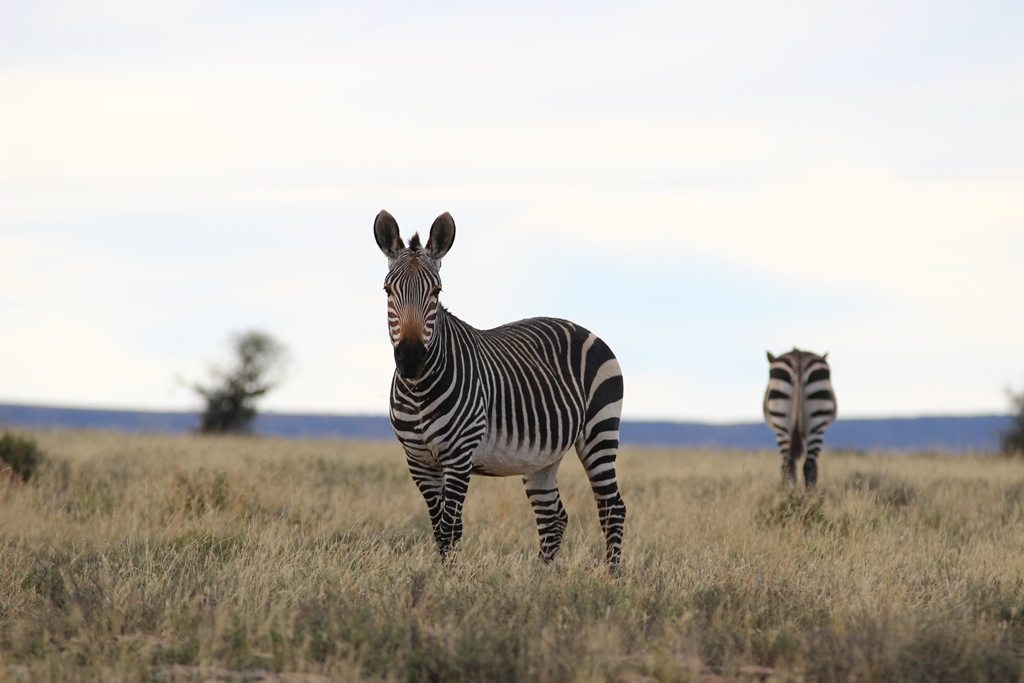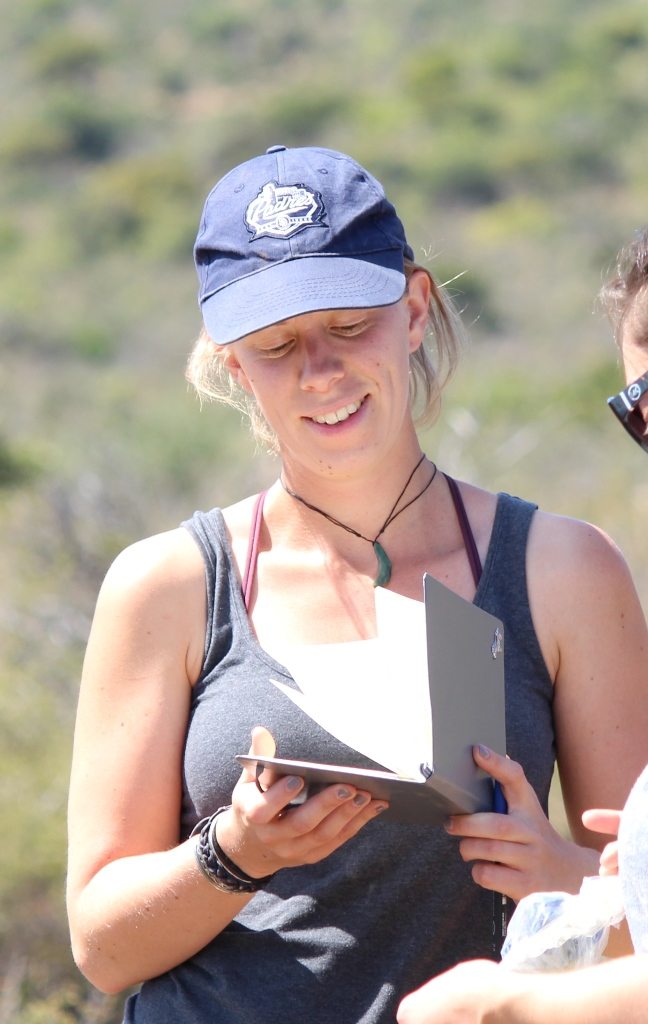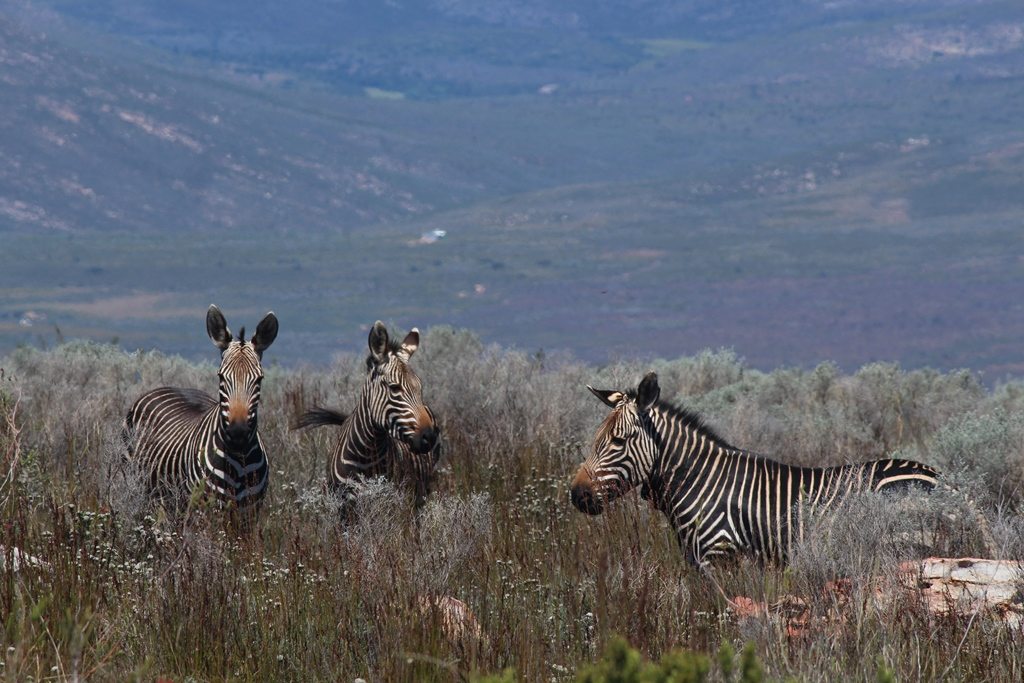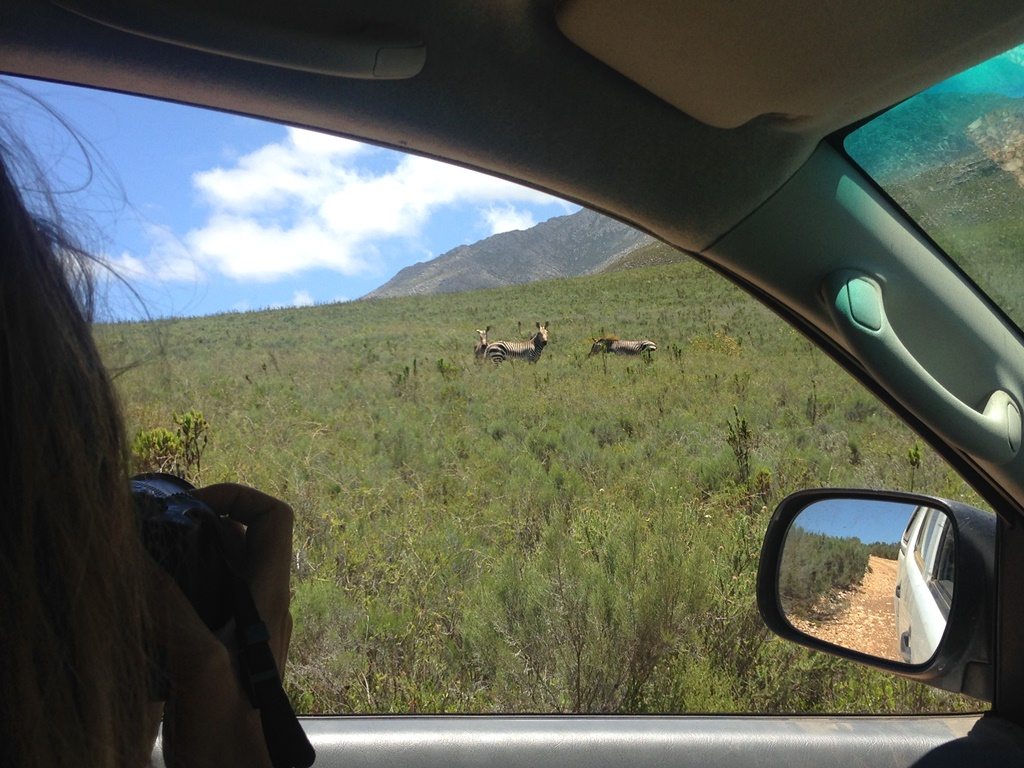
“A large part of my PhD research has focused on the Cape mountain zebra, a species endemic to the Cape of South Africa and listed as ‘vulnerable’ on the IUCN Red List. Cape mountain zebra provide an ideal study animal to look at possible ways to improve an on-going conservation strategy, as the zebra have now been actively managed for several decades. They have been conserved very successfully, recovering from less than 80 individuals in just three populations to over 5000 individuals today. However, many populations have very slow growth rates and too few individuals to risk translocations.
Collecting data
“Most of the current populations contain genetic information from just one founding population, and they are not well mixed. This is concerning, as we want recovered species to have long-term resilience to any future environmental or human-induced threats. Therefore, we set to figure out what was causing some populations to perform poorly.
“The first thing that is apparent about the Cape mountain zebra is that it has many disconnected populations across a wide range of habitat types, ranging from grassland to shrub-land to desert-like Karoo. We decided to use Geographic Imaging Software to map the vegetation types in each of the nature reserves where the zebra are found, and estimate how much grass was in each one. This is important as grass is a zebra’s primary food source, and acts as a measure of habitat quality for this species.

“In addition, we collected poo samples from zebra from six populations and looked at the nutrient composition as a measure of diet quality. Lastly, we collected census information about 21 populations to compare population growth rates, the density of individuals, and female reproductive rates.

“We found that there was a lot of variation in grass abundance across populations, and that where grass was scarce it was also less likely to contain protein and essential elements. This is doubly worrying for zebra in these reserves as not only do they not have as much to eat, it’s also less nutritional. Finally, we found that zebra populations with a low abundance of grass had lower growth rates, occurred at lower densities, and had lower female reproductive rates. This means that zebra in populations with low habitat quality are reproducing less successfully, or at lower rates, and some populations may have already reached their carrying capacities.
“These results are interesting as the Cape mountain zebra has been actively conserved in these low quality habitats for many years. However, we think there is a misconception of where the Cape mountain zebra would have occurred, or the habitats it would have used, prior to displacement by humans.

“It’s possible that this zebra would have migrated up and down the mountain slopes seasonally, however That’s not possible now as the lowlands were transformed for agriculture many decades ago. There’s now a misconception about where the Cape mountain zebra should be conserved, as in recent history it has only been found in areas less suitable for human occupation – in this case high altitude slopes.
“These are ‘refugee’ populations, and they may be prevalent in the animal world given the extent of land conversion and biodiversity decline. It will be important to identify species with refugee populations so that they can be effectively conserved and persist in the face of future threats.”
The next part of Jess’ PhD will be investigating stress hormones and testosterone using faecal samples in the Cape mountain zebra. Huge thanks to team zebra: Jessica Lea, Shelby Matevich, John Jackson, Prof Graham Kerley, Dr Sue Walker and Dr Susanne Shultz for Acting for Wildlife.